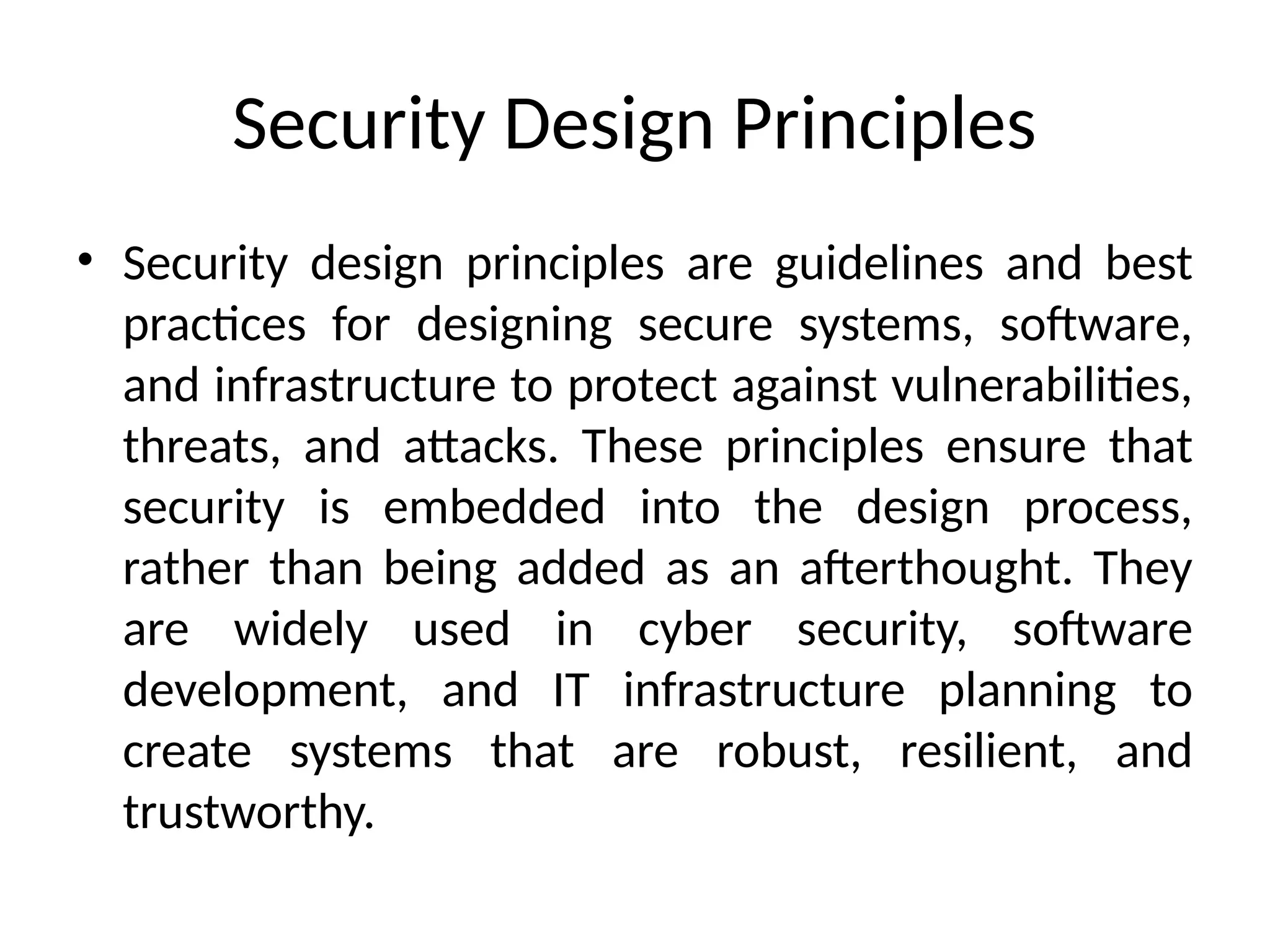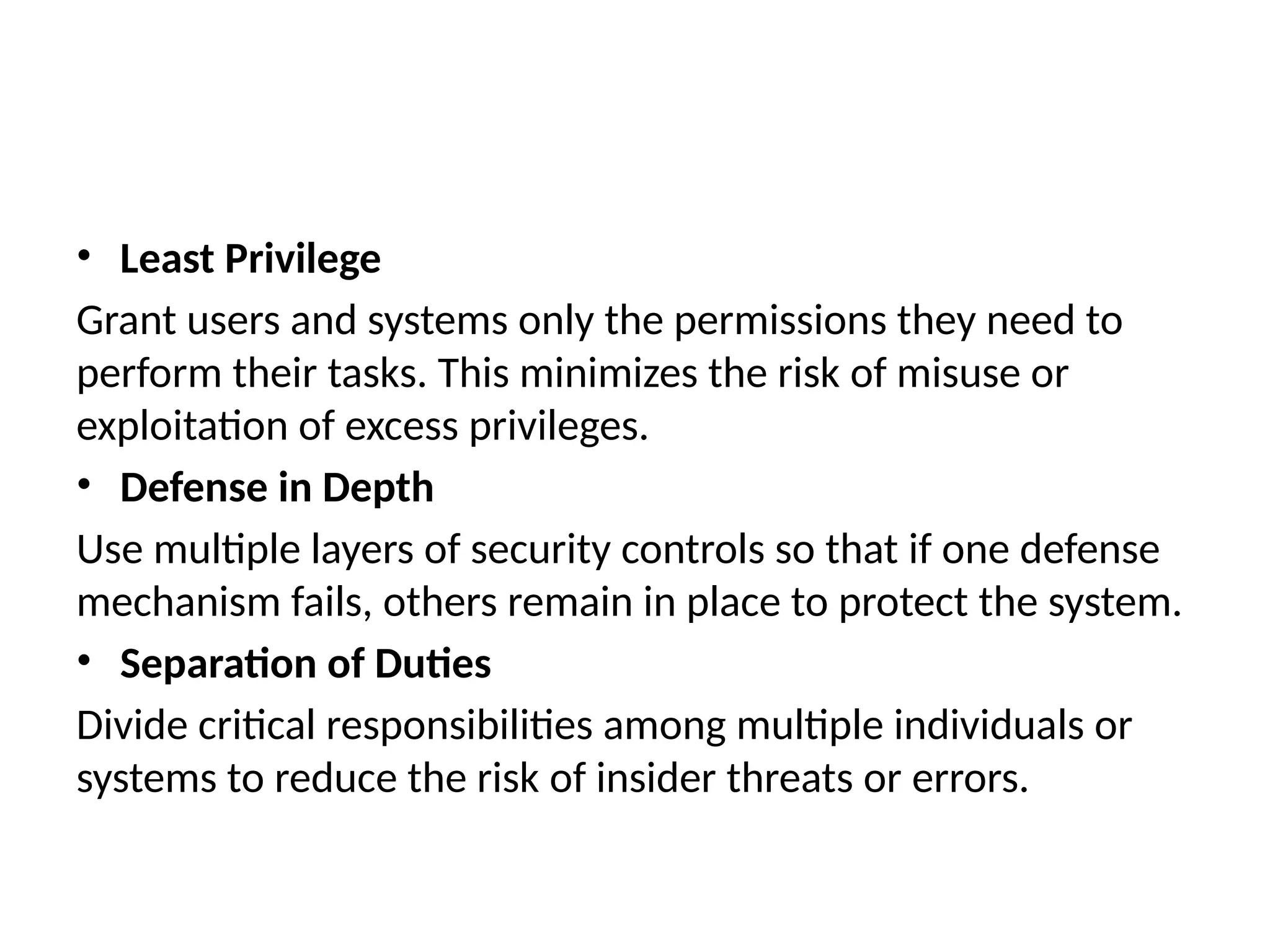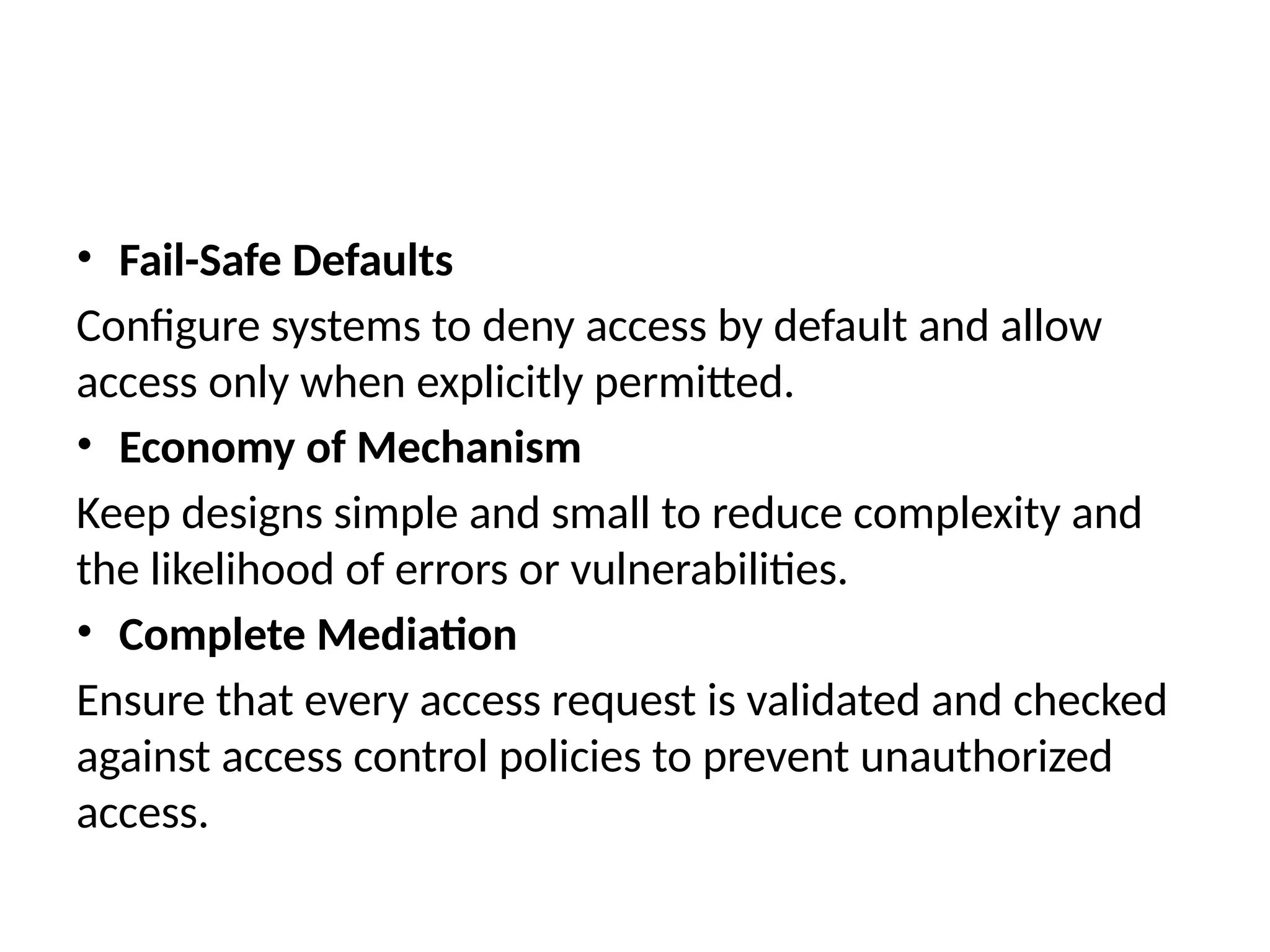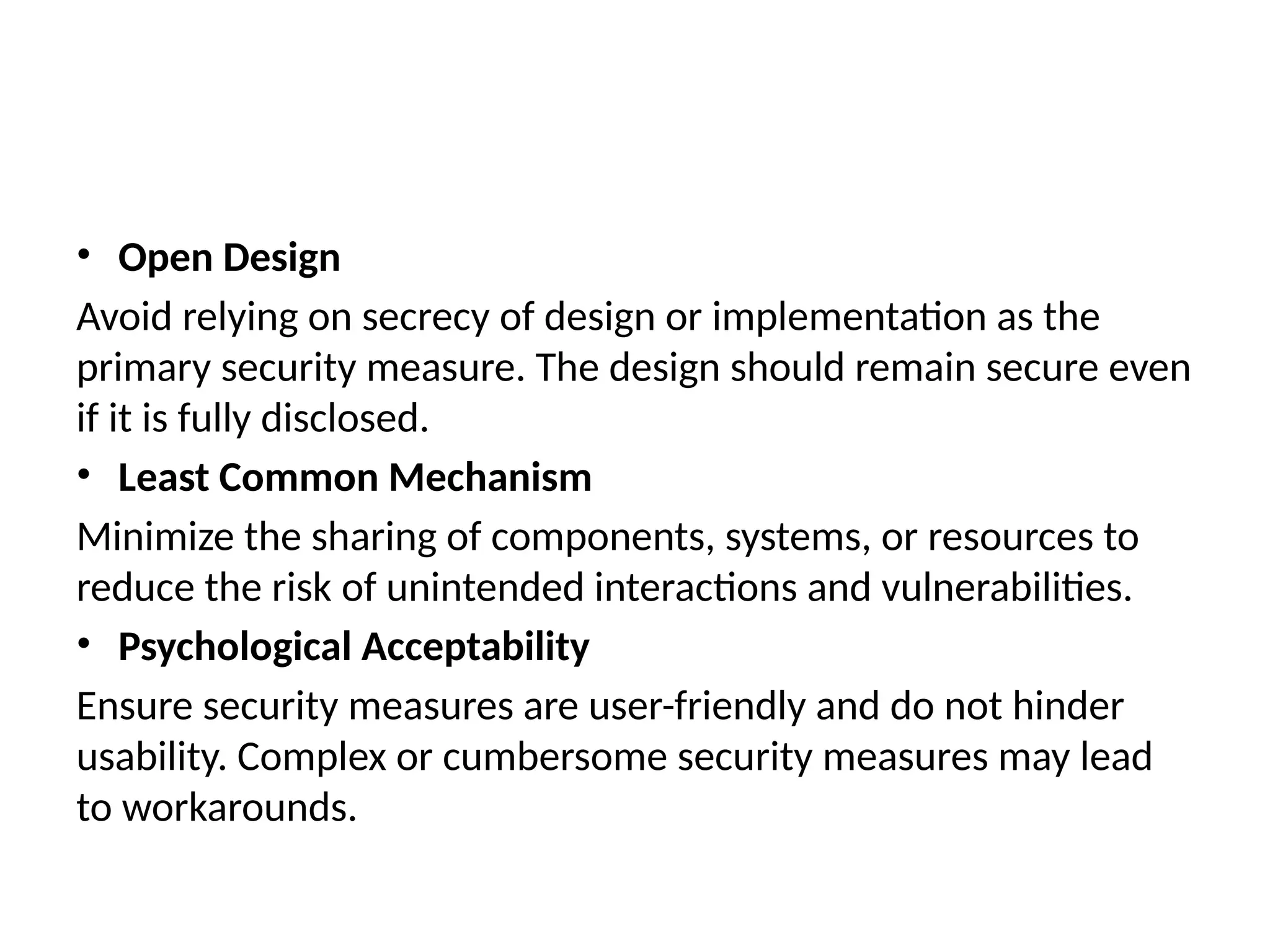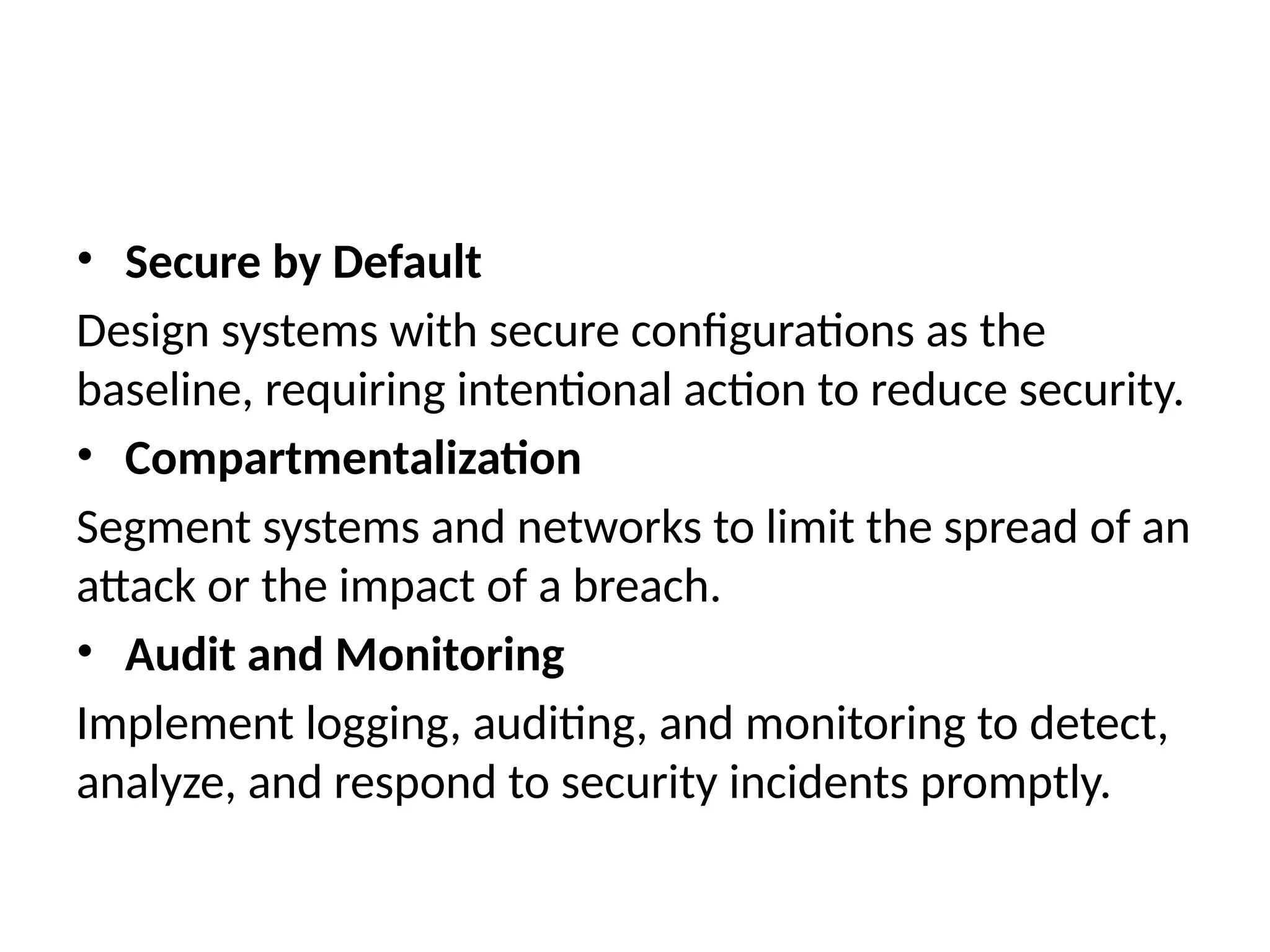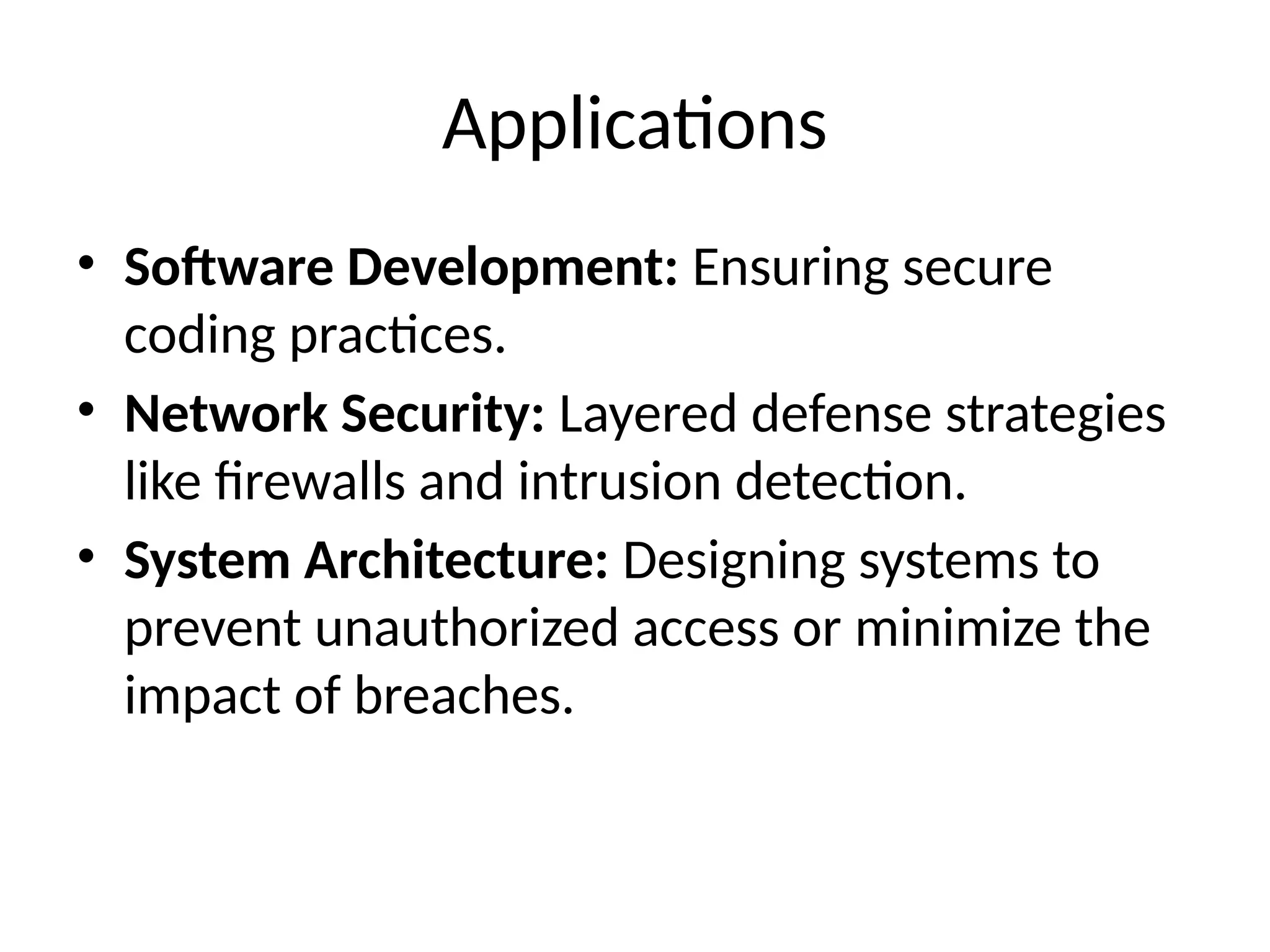Security design principles are guidelines for creating secure systems, emphasizing that security should be integral to design rather than an afterthought. Key principles include least privilege, defense in depth, fail-safe defaults, and secure by default, all aimed at minimizing vulnerabilities and enhancing system resilience. These principles are applicable in software development, network security, and system architecture to guard against potential threats and attacks.

